Disclosure: Meeple Mountain received a free copy of this product in exchange for an honest, unbiased review. This review is not intended to be an endorsement.
‘Oh, so pretty!’ said Lisa, spotting the stacks of cards on the table.
‘Oh, so shiny!’ said Lisa, picking up the cards in front of her.
‘Oh, so, um… slippery?’ said Lisa, looking down at the cards now scattered around her feet.
–
Welcome to Mystic Vale, where the adjectives ‘pretty’, ‘shiny’ and ‘slippery’ are likely to be the first impressions of most people encountering the game in the wild.
Mystic Vale was published back in 2016, the brainchild of John D. Clair and the first step in Alderac Entertainment Group’s ‘Card Crafting System’. Whilst Dead Reckoning has been making waves recently, Mystic Vale currently remains the strongest of the card crafting games, and yet strangely not one we’ve covered here at Meeple Mountain.
Let’s correct that: Mystic Vale is excellent, but won’t be everyone’s cup of tea.
Advancements, Risks and Bouquets of Bindweed
Here at Meeple Mountain we’ve had a lot of fun with ‘-builders’. Not the tea-addled house-raisers but the tabletop genre in which players build customised arrangements of items that when randomised spit out resources, money, points, bonuses and so on. We’ve built decks, bags, dice pools and even dice themselves (with mixed results).
Mystic Vale takes this building ethos and applies it to single cards: each of your 20 cards (tarot-sized plastic envelopes) has space for three Advancements to be slotted into it, transforming a blank canvas into a super producer. As the game progresses your deck of 20 cards never increases but their individual capabilities soar.
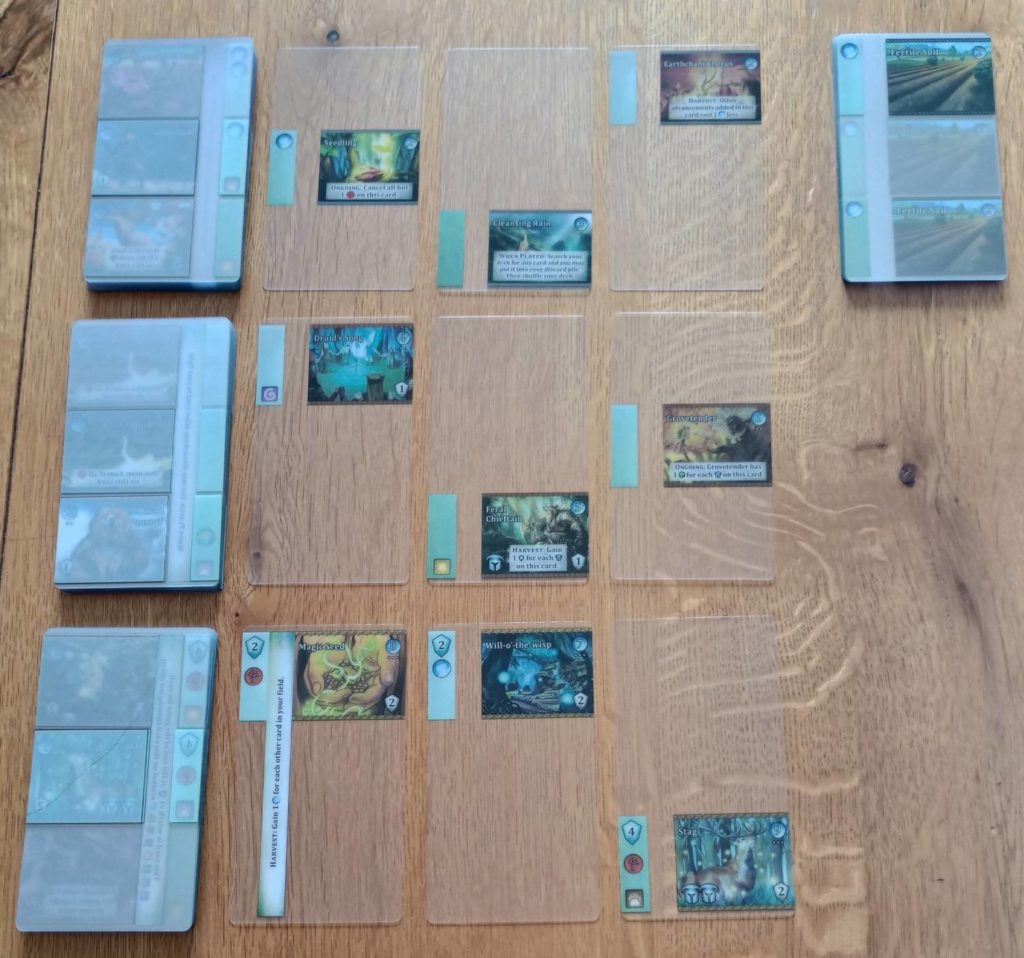
Two basic currency systems dotting your cards are the path of progression. You pay ‘mana’ for card Advancements and three types of ‘spirit’ for Vale cards – permanent additions to your play area that provide points and the occasional bonus ability. Within 15 minutes your duff starting cards are festooned with mana and spirit symbols, as well as a sprinkling of abilities to make even the most curmudgeonly of grouches smile.
Underpinning everything is ‘decay’, a push-your-luck mechanism that reminds you that no one succeeds without taking a few risks. To determine the cards for your turn, you flip cards from your deck until a third red decay symbol appears. You can choose to keep turning cards over but if a fourth decay symbol materialises then your turn spoils away to nothing.

As you might imagine, your starting deck is peppered with decay symbols and there are plenty of purchasable Advancements that add or subtract decay. Advancements with decay often come bearing bouquets of beneficial symbols, but adding too many decay symbols to your cards will choke your blossoming engine like bindweed. Balancing decay is crucial; with some clever crafting you can even play all 20 cards from your deck in a single turn.
Thick Wallets, Absent Chaff and Aliens
And that’s Mystic Vale. Improve your cards, take chances, mitigate risks and amass points. It’s deeply satisfying. The simplicity of the underlying rule set allows you to savour its best part: building your cards. You start with these undernourished plastic sheaths and by the time the game finishes they’re swollen with symbols and abilities.
A fat wallet feels intrinsically better than a lean one.
The journey from impoverished pauper to big spender is incredibly rewarding. On your first turn you might only have 2 cards to play with, by the end you’ll be slapping down half your deck or more and producing more resources than you can spend (keeping track of all those spirits might even overwhelm late game). The entire arc entertains, with highs throughout.
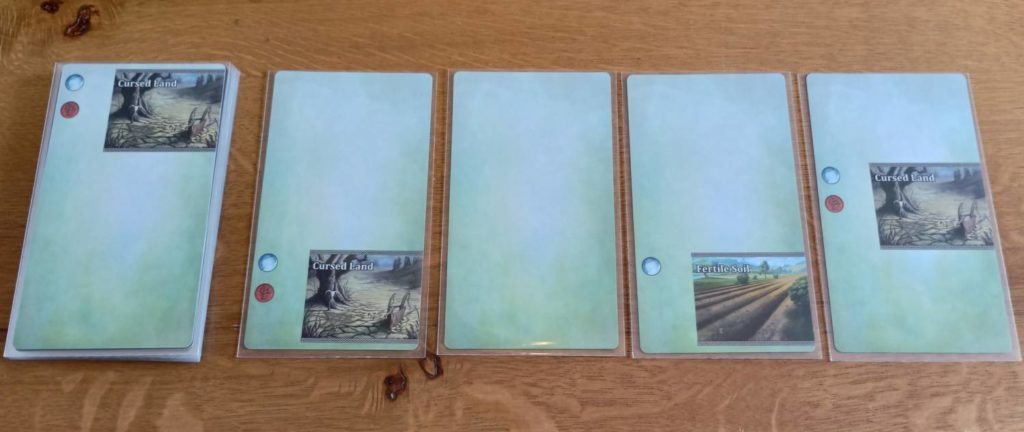
All good ‘-builder’ games can produce amazing turns but littered amongst the grain will be the occasional turn where you draw/roll nothing but chaff. Even the best constructed decks, bags and pools are susceptible to a late game misfire, a turn that kills the momentum and allows your opponent(s) to steam ahead. By making your individual cards stronger the effect here is to make your turns less reliant on the shuffle bringing specific cards into play together.
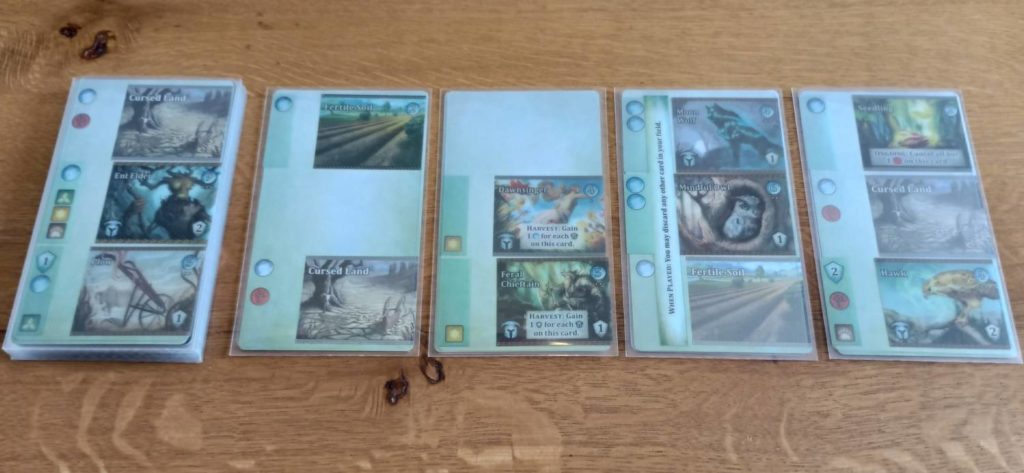
Sure, duff turns can happen in Mystic Vale’s second half, but they aren’t down to chance or your opponents. They’re down to you and the decisions you’ve made throughout the game. You didn’t need to flip that extra card, you could have nullified decay, you might have bolstered decay cards to make them better when they do appear. The susceptibility of your engine to the vagaries of fate comes from your own decisions.
The human players are the true agents of decay in Mystic Vale.
It’s less about assembling a team that works well together, as in most ‘-building’ games, and more about assembling a squad where each individual member is a one-person army. Why assemble a unit of mediocre marines and hope they gel when instead every member of your crew could be a Ripley-esque badass. Game over, man.
Cohesion, a Full Buffet and the Cool Kids
Of course, I’m personifying the cards in the above analogy. Your cards aren’t a team of people. I’m not too sure what they’re meant to represent (the rules do say, I’ve repeatedly forgotten). A single completed card might consist of a Stag, a Seed and a Plow. Or a Warden, a Rhino-thingamy and some Calm Weather. Yeah, I’ve no idea either. I’ve worked on environmental issues, I adore games about nature and I’ve been a fan of the fantasy genre my entire life. Mystic Vale’s theme is absolutely in my wheelhouse but the cards make little sense when assembled.
Lisa’s first response was correct: Mystic Vale is indeed very pretty. The artists have done an outstanding job, with a similar enough style that you wouldn’t guess that there were nine of them. But a completed card doesn’t look cohesive; they’re patchworks rather than single pictures and that feels like a missed opportunity.

A minor complaint. There are others. Most things are clear but with blocks of text often at right angles to each other, multiple similar symbols and a couple of close colour choices, assessing the advancement card market can be draining with poor lighting and tired eyes.
Let’s also be clear that for a game about protecting and revering nature, my word does it use a lot of plastic. Two thirds of every advancement card is just clear plastic. Granted, it’s not plastic that will be disposed of but the film you have to peel off each card is (the peeling is time-consuming but oddly satisfying). I feel like there could have been another solution.
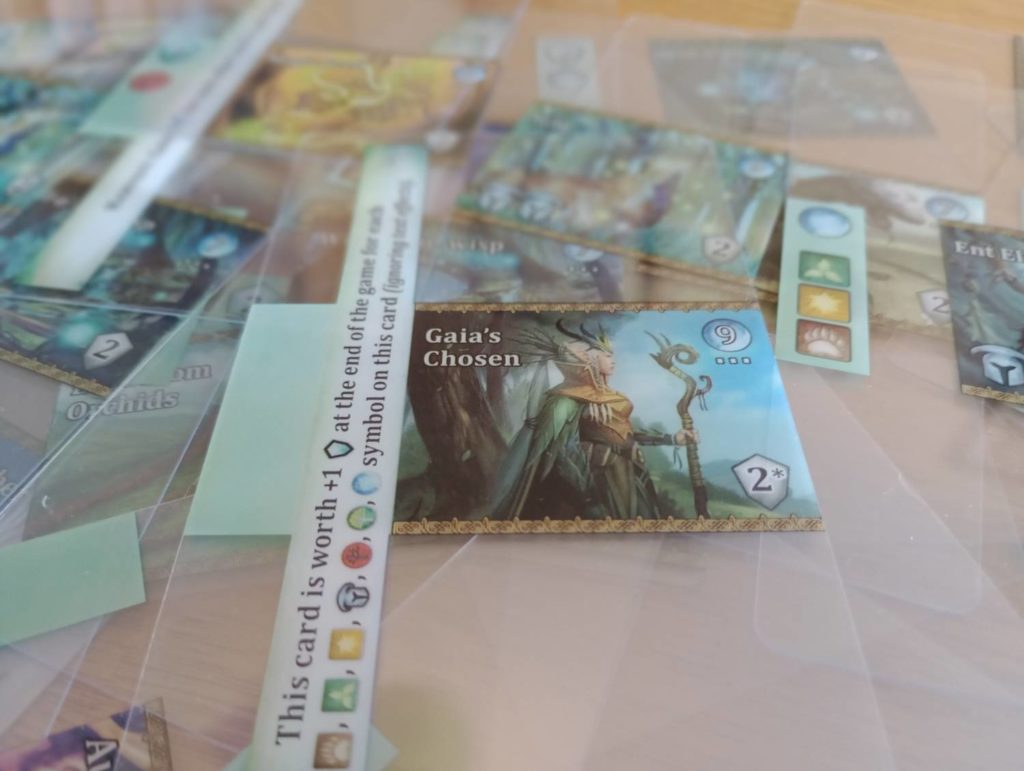
And then there’s the type of tea that Mystic Vale offers. John D. Clair has stated that he set out to create a game with low interactivity. You should pay attention to what your opponent is up to and react accordingly, but other than nabbing a card you know they’d like there’s little you can do to stop them. Multiplayer solitaire the cool kids call it, and Mystic Vale is intentionally built that way.
That’s fine by me. I enjoy feeding from the full buffet of interactivity and Mystic Vale is undoubtedly at the less social end of the trough. I will say, though, that the pressure that comes from turning cards over and hopefully not spoiling with a fourth decay symbol makes it more social than you might initially think. The in-game point tokens that act as Mystic Vale’s timer are a powerful reminder of your opponents’ progress, and when an opponent has a wildly successful turn the temptation to take a little more risk when flipping cards is dense enough to chew on.
Novelty, Sheen and the Joy of Touching Stuff
Mystic Vale absolutely achieves what it sets out to do and its tactility is pretty special. That process of sliding advancements into the cards and the effect of seeing your cards develop and thicken tickles a spot that few games reach. There’s an app version of Mystic Vale; it’s decent but it lacks the joy that comes from all that plastic-on-plastic action. It’s surprising just what a difference the physical sensation makes.
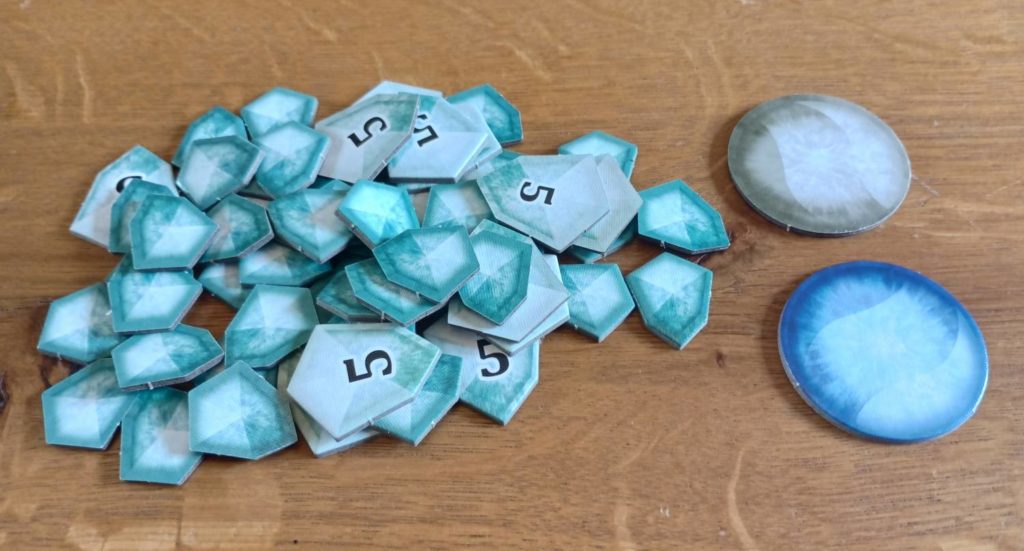
There’s a reason Mystic Vale featured at Number 57 in Meeple Mountain’s Top 100 Most Important Games of the 2010s. It feels novel, even to those used to building decks, bags and the rest. I’ve highlighted a few small scuffs on Mystic Vale’s sheen but it’s small beans if you aren’t averse to limited interaction with your opponents. Perhaps there could be a little more variety in the decks but the base game by itself will comfortably see you through 10 plays and more without feeling stale. And when you fancy a change, there are many expansions to freshen things up. In fact, check out our review of Mystic Vale: Essential Edition for a great entry into the game – it contains the base game reviewed here along with the first three expansions and additional gubbins. Like Mystic Vale itself, it’s well worth a look.
–
‘Love it!’ said Lisa an hour later, removing the advancements from her cards.
‘I love it!’ said Lisa, organising all the cards into their appropriate stacks.
‘I just love it!’ said Lisa, slotting the cards back into their appropriate slots in the box, ‘takes a while to put away though.’
That it does.


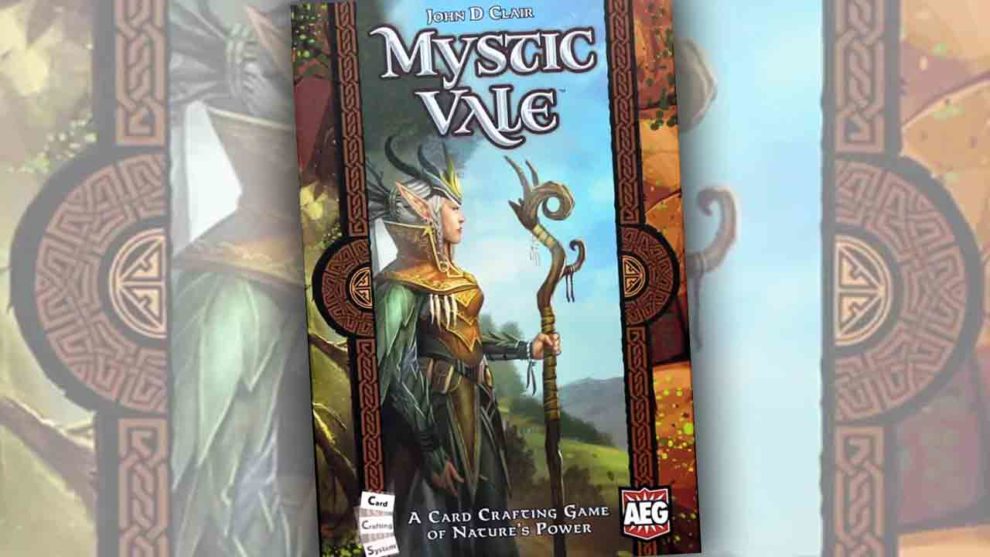

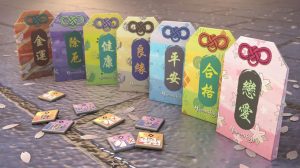







Add Comment